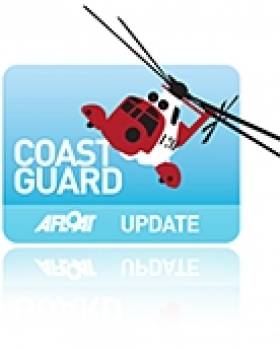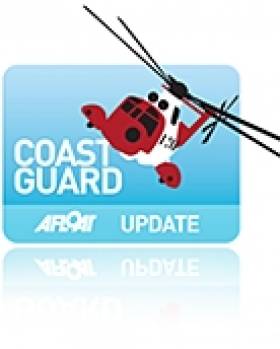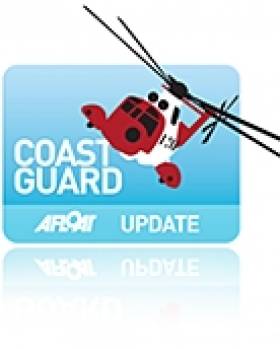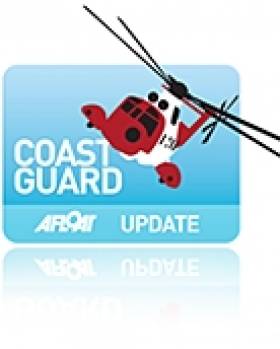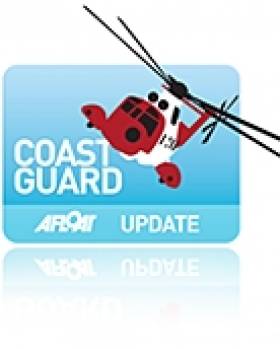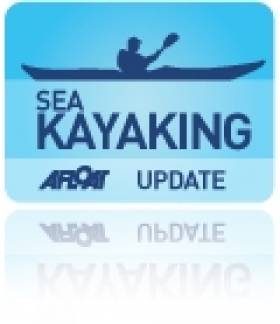Displaying items by tag: Coastguard
Helicopter Rescues Man Who Fell off Howth Head
A man who was critically injured when he fell 100ft off a cliff in Howth has been rescued by the Coastguard helicopter.
At 17.30 this evening Howth Coast Guard were requested by Gardai to assist with the search for a male last seen at Howth Summit car park. The unit's Volunteers assembled and began searching the cliffs along Howth Head, according to the Howth Coastguard website.
The Coast Guard Helicopter, Rescue 116, was also requested, according to Howth Coastguard.
Shortly before 18:00 one of the Coast Guard search teams sighted a male who appeared to have fallen 100 feet off the cliff path near the Bailey Lighthouse. The Coast Guard Cliff Rescue Team were deployed to set up a rope rescue and lower two Cliff Rescue Climbers; meanwhile Rescue 116 proceeded to lower a Paramedic winchman to the casualty. The three rescuers administered first aid while the helicopter prepared to lift the casualty. They were joined by personnel from the Howth RNLI inshore lifeboat.
The casualty was extracted frrom the cliffs and transferred by the Coast Guard helicopter to Tallaght hospital.
Howth Lifeboat Rescues Drowning Woman
The Lifeboat crew had been out on exercise when they spotted the 31 year old female struggling above the waves. She had sunk two feet beneath the water when the crew reached her. They managed to catch her clothing and pull her aboard the All Weather Lifeboat (ALB), immediately administering first aid.
The RNLI crew then took the lady safely to Howth harbour, as she was thought to be too distressed to be lifted by the Coastguard helicopter which was also in attendance. An awaiting ambulance brought her to Beaumont Hospital to recover.
Howth RNLI voluntary crewmember Dave Howard says:
"All the crew were relieved that this rescue had a positive ending, the lady would certainly have died had we not already been at sea on exercise. She was very lucky"
Related Safety posts
RNLI Lifeboats in Ireland
Safety News
Rescue News from RNLI Lifeboats in Ireland
Coast Guard News from Ireland
Water Safety News from Ireland
Marine Casualty Investigation Board News
Marine Warnings
HM Coastguard Wins GAA Match
The event involves members of the security and emergency services from across Ireland who could find themselves called upon to cope with major incidents or natural disasters. They come together once a year to build relationships through a day of sporting challenge. The informal associations forged at the sports day help to reinforce a team spirit which could one day prove invaluable.
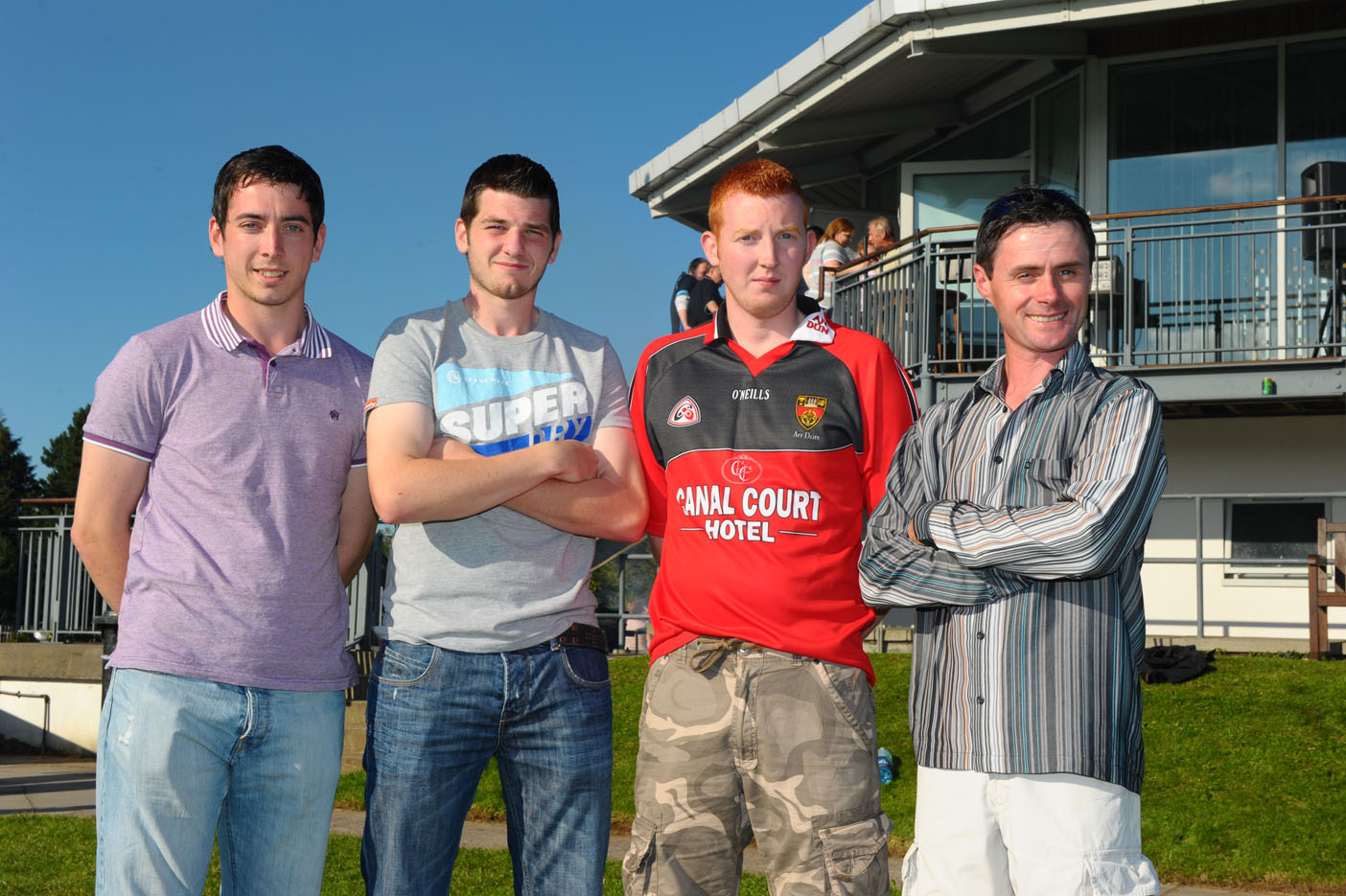
Pictured celebrating their victory in the 7-a-side Gaelic Football competition are members of Team Coastguard, from left, Conor McCombe, Ciaran McCann, Jonty Addis and John Lowry, all from County Down
Tanker Assists Dismasted Yacht
Marc Thomas, Watch Manager, Falmouth Coastguard said: Due to the yacht becoming dismasted their communication capability was limited to their handheld VHF radio. They managed to make communication with the tanker as it was passing who then passed on the call to the Coastguard.
This incident is a good example of one seafarer assisting another when the yacht's options were limited due to its dismasting. We were pleased we were able to assist the French sailors.
Welsh Coastguard Evacuate Walkers
At twenty minutes past one this afternoon, Swansea Coastguard received a call from ambulance control requesting assistance to the aid of an injured walker.
The lady had called 999 and requested the Welsh ambulance service, after they had taken the call they assessed that they would need Coastguard assistance to extract the lady from where she was. She had fallen in woods near to the Irish Sea coast and had sustained a broken ankle.
The Llantwit Major Coastguard rescue team was called out. They located the lady and placed her in their rescue stretcher and carried her out to the waiting air ambulance who then evacuated her to hospital.
Earlier in the day Swansea Coastguard received a call for assistance from the Welsh ambulance service, when a 51 year old male, part of a group of 800 coastal walkers on a fundraising walk for charity, fell and dislocated his elbow.
Rhossili Coastguard rescue team was called out and located the man. Due to the extreme pain this man was experiencing, a doctor who was attending requested that the best way to evacuate was by helicopter. A rescue helicopter was requested. The Rhosilli http://www.afloat.ie/resources/organisations/irish-coast-guard/ team cleared an area for the helicopter to work safely in the evacuation of this man.
Dai Jones, Watch Manager at Swansea said:
Our Coastguard rescue teams train for this type of recovery and we were pleased that we could assist in the rescue of these two walkers.
Coastal cliff paths are often uneven and can present a problem when walking them.
Always ensure that you are equipped for the activity you are undertaking and ensure that you are wearing adequate footwear.
Go Ahead for New Doolin Coastguard Station
Clare County Council granted planning permission for a €1.9 million coastguard station at Doolin. The new station will have capacity for three boats will be one of the biggest of its kind in Ireland. More from the Clare People HERE.
Galway Lifeboat Launches Twice with Boats in Difficulty
Galway RNLI lifeboat was called out to two separate incidents on Galway Bay yesterday when two boats got into difficulty, one near Barna with three people on board and the other near Galway Docks.
The first incident involved a 30ft sailing boat, which was spotted drifting towards the shore between Rinmore Beach and Galway Docks, known as the Forty Acres. The boat was unoccupied and is understood to have broken its moorings near Mutton Island. The alarm was raised by a passing sailing boat and the Irish Coastguard tasked Galway lifeboat to the scene at approximately 10.40am.
The boat had run up on rocks close to the shore however the lifeboat crew of Helmsman John Byrne, David Oliver and Sean King managed to rig up a tow and bring the boat safely to Galway Docks.
The second callout happened near Barna at approximately 1.35pm. Three people in a 22ft open-deck fishing boat got into difficulty when the engine failed and the boat started drifting onto rocks half a mile west of Barna.
Two of the three people on board were wearing lifejackets and decided to swim for it as the boat veered towards rocks about 500 metres from the shore.
The Irish Coastguard tasked several rescue units to the scene including the Shannon Rescue Helicopter, the Aran Islands lifeboat, Galway lifeboat, and the Irish Coastguard Rescue Unit from Rosaveel. Two Galway Bay Sailing Club rescue boats already out at the club's regatta came across to assist in the rescue when they heard the distress call.
The three people made it safely ashore where Gardai from Salthill were waiting. They did not require medical attention. Attempts were made to take the boat in tow but it wasn't feasible and Galway lifeboat was stood down. The crew on the second callout were Helmsman David Oliver, John Byrne and Olivia Byrne.
Related Safety posts
RNLI Lifeboats in Ireland
Safety News
Rescue News from RNLI Lifeboats in Ireland
Coast Guard News from Ireland
Water Safety News from Ireland
Marine Casualty Investigation Board News
Marine Warnings
Coastguard to Carry Out Irish Sea Windfarm Exercise
The UK's Maritime & Coastguard Agency in conjunction with RWE npower renewables, the RNLI and RAF Search and Rescue, are due to exercise communications, co-ordination and response to a series of mock-maritime incidents in and around the wind turbines at the North Hoyle and Rhyl Flats Offshore Wind Farms on the Irish Sea.
Rhyl Flats Offshore Wind Farm is a 25 turbine wind farm approximately 8 km north east of Llandudno in North Wales. It is Wales' second offshore wind farm and the third offshore wind farm to be built within Liverpool Bay. It has a maximum rated output of 90 MW.
The Exercise is due to take place on Sunday 5th September.
The exercise will be coordinated by Holyhead Coastguard, and involves multiple agencies, including the North Hoyle and Rhyl Flats wind farm operators, maintenance teams and a number of service vessels.
Jim Paton, Rescue Co-ordination Centre manager at Holyhead Coastguard said:
"We are very keen to practise various elements of a search and rescue within a wind farm and to test rescue and evacuation procedures for 'walking wounded' from intermediate and lower platforms of a wind farm tower. With colleagues in the RNLI we will exercise the appointment of the Rhyl RNLI all weather lifeboat as on scene co-ordinator to search the surface sea area for missing people with multiple search units employed.
"We want to be able to test procedures for the rescue and evacuation of persons from a turbine nacelle and with the RAF, test a helicopter evacuation of a casualty from the nacelle of a wind turbine. We will also be exercising winching procedures within a wind farm complex using lifeboats, a helicopter and a wind farm service vessel all working with each other. We expect the exercise to take about four (4) hours from midday to 4.00 pm."
The exercise will begin with Holyhead Coastguard receiving a call reporting a 4x4 vehicle and trailer parked in Rhyl overnight. The first informant will also explain that he had seen two people from this vehicle launching a small boat from the slipway opposite at around 8.00 pm the previous evening, and who haven't been seen since. Additionally the Coastguard will hear about the need for an individual to be airlifted from somewhere within the North Hoyle offshore wind farm .
Jim Paton continued
"As wind farms become larger and more involved; an emergency service such as the Coastguard must be fully aware of the challenges of search and rescue within such complexes when the weather and sea conditions at the time of the incident may be extremely hostile."
Search for Missing Man on Valentia Island
Irish Sea Kayaker Feared Dead
A kayaker is feared dead after disappearing in treacherous conditions off the coast of Anglesey on the far side of the Irish Sea. The 53-year-old mother-of-two was separated from four other canoeists between Rhosneigr and Rhoscolyn as they were battered by waves and heavy winds at around 2.30pm on Sunday.
The rest of the party were washed ashore but the woman from Shrewsbury has not been seen since then.
Her disappearance saw a major land and sea search launched with the police and RAF Valley helicopters, three lifeboats and dozens of coastguard officers scouring the area.
They were yesterday joined by a fixed wing aircraft and SARDA search and rescue dogs who were searching the coastline in case she had been washed up injured onto the shore.
The chance of her being found alive was fading with every passing hour but the coastguard said they had not given up hope. More HERE from the North Wales Daily Post.



























